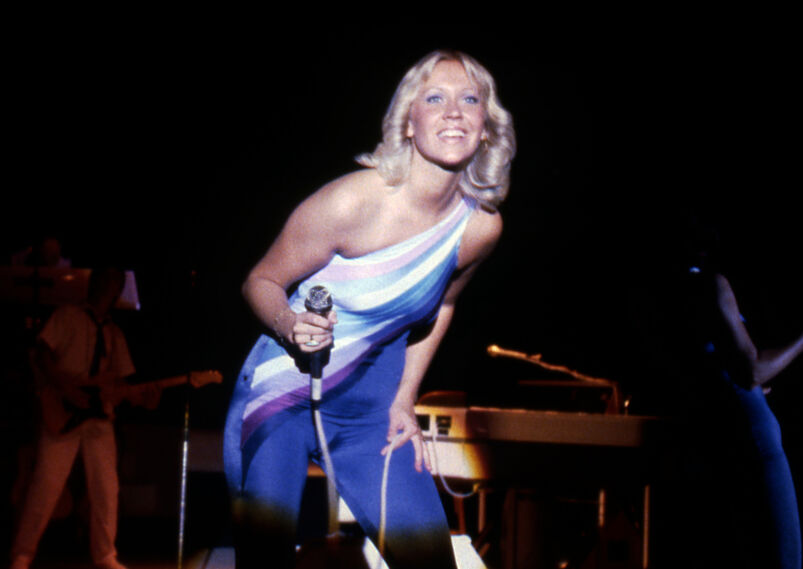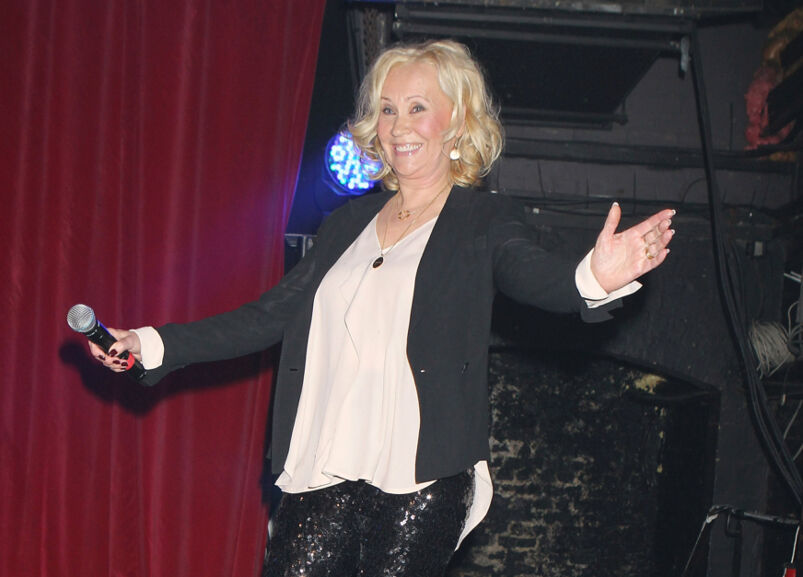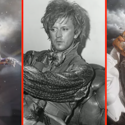
In America, the name Agnetha Fältskog means little to nothing to most people, but in much of northern Europe, she’s a major, major celebrity.
One of the four members of ABBA dominated charts globally throughout the ‘70s with the band’s seemingly never ending slew of pop smashes–including queer favorites like “Mamma Mia,” “Gimme! Gimme! Gimme! (A Man After Midnight)” and, of course, “Dancing Queen.”
Following the group’s quiet split in the early ‘80s, Fältskog embarked on a solo career that saw her prove that she was capable of real success on her own, even if it was limited to one region. Eventually, she retreated from public life entirely for more than a decade and a half, only to reemerge as a star once more, this time with one more dance smash for her die-hard fans.
Released in 2013, Fältskog’s most recent album A was mostly filled with more adult-leaning pop ballads, but there was one tune that stood out. “Dance Your Pain Away” wasn’t like anything else the pop icon had shared in a long, long time, and it brought her back to the glory days of when ABBA soundtracked dance floors everywhere.
While her single didn’t reach the same heights, it showed that even though she was a woman in her ‘60s, she could still make people move.

“Dance Your Pain Away” capitalized on the dance-pop sound that had emerged as the top genre following major hits from the likes of Lady Gaga and Britney Spears. Though the music that backs the track sounds a bit dated now, at the time it was still of the moment. What made the single so interesting was not just the pivot to another style of pop that Fältskog decided to try out, but the subject matter tackled in the tune.
Just a few years before Fältskog returned to the studio, fellow Swede Robyn had changed the trajectory of pop music forever with her album Body Talk. That era produced singles like “Dancing on My Own” and “Call Your Girlfriend,” which both helped introduce sad pop to the world. Robyn had managed to do what almost no one before her had: make songs about depression, loss, heartbreak and loneliness immensely danceable—and since those songs appeared, they have never left the playlists of countless gays everywhere.
Related:
LISTEN: This ABBA member’s breakout solo hit was a stalker anthem for the ages
Frida released two albums in English after leaving ABBA. Her first, “Something’s Going On”, was a massive global success.
Fältskog and her producer and songwriter Jörgen Elofsson—the man behind hits like Spears’ “(You Drive Me) Crazy” and “Sometimes” and Kelly Clarkson’s “A Moment Like This” and “Stronger (What Doesn’t Kill You)”–were clearly inspired by this new direction that pop was headed in. After Robyn moved on, this torch would be picked up by many others, with names such as Lykke Li, Lorde, and Billie Eilish all finding success by mashing up electronic pop and deep sadness.
This subgenre wasn’t made exclusively for gay men, but it’s likely that no other demographic identifies with it as strongly as they do. For decades, gays have flocked to clubs (and discotheques before then) to dance their many troubles away. Elofsson captured this feeling and seemingly wrote the track for this group, as the lyrics line up specifically with the life experiences of so many gay men.
The lines “Nothing he can do / Damage been done / You caught him in the rest room / With another one” point to a quick romance in a club going sour—something not unfamiliar to many gay men, while another set of lyrics, “Let there be rumors / Pay no attention / Lock your tears inside and show some pride” don’t need to be dissected much for anyone to realize they’re for the gays first and foremost.
The “Dance Your Pain Away” music video is a decidedly cheap affair, and the woman behind the track doesn’t even appear in it. Instead, fans submitted videos of themselves dancing to the track–long before TikTok was a thing–and a handful were edited together. Several of Fältskog’s followers who did so showcase their moves in a way that strongly suggests they’re part of the LGBTQ+ community, and her choosing to include them is a much-desired stamp of approval.
By the time Fältskog released A, she had largely stopped promoting her work. The singer had developed a fear of crowds and flying, and she primarily let the music speak for itself, with her still-famous name helping as well. That said, she did go out of her way to make appearances at famed club G-A-Y in London and then at Stockholm Pride around the time this album and single were out.
“Dance Your Pain Away” was only a minor hit in a handful of places, but it remains a song that means a lot to many gay men all around the world, recorded by an artist regarded as a true LGBTQ+ icon.

Related:
LISTEN: Celebrate Pride all month long with Queerty’s 2023 Pride Playlist
Pride season is right around the corner & we’ve has got you covered with our official 2023 Pride Playlist! We’ve curated the best bops & classic anthems from queer musicians and LGBTQ+ icons. Get ready to elevate your Pride month celebrations with these fierce tracks.




















FridM
She’s a sweet soul. Modest and simply beautiful!!!
iancee
Indeed, many of the featured fans are members of the LGBTQI+ community. Plus for added value the shots of Agnetha are on stage at Stockholm Pride when she was awarded gold records for her album A.
eightinchnail
This song deserved to be a huge hit. I have been a fan of ABBA since 1976 when I first heard SOS and saw them live in 1979. Agnetha never wanted to be a global megastar but I am thankful for the fact we can appreciate her beautiful emotive voice.